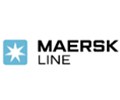Denmark’s Maersk Line, the world’s biggest container-shipping company by capacity, will likely include vast Triple-E vessels among its planned multimillion-dollar ship orders over the next six months, the company’s chief executive said.
“Over the next three years, the bulk of the capacity we will be buying is going to be big ships that may include Triple-E size,” Soren Skou told The Wall Street Journal in an interview.
The company, which on Tuesday reported a 23.5% year-over-year increase in its third-quarter net profit to $685 million, said earlier it would place its first orders within the next six months. The orders would be its first for newly built ships since 2011.
Container shipping, which carries about 95% of the world’s manufactured goods, has suffered for the past decade from overcapacity that has led to falling freight rates, which major operators have described as unsustainable. A plethora of smaller shipping companies regularly undercut freight rates from Asia to Europe and across the Atlantic and Pacific oceans, hoping to stay in business until the industry recovers.
Despite the extra tonnage in the water, Mr. Skou said demand for shipping will grow 4% to 5% over the next few years. He said ships like the Triple-E—the world’s largest and most efficient vessels, which can carry in excess of 18,000 containers—save the company around 25% of the cost of moving a container from Asia to Europe compared with smaller vessels in Maersk’s fleet, provided the ships sail fully loaded.
Maersk Line, a unit of conglomerate A.P. Møller-Mærsk A/S, ordered 20 such ships in 2011 at a cost of around $185 million per vessel. At the time, competitors doubted whether Maersk Line would be able to fill such behemoths, but they now are rushing to place their own Triple-E orders to compete with the industry’s big players.
“With 4% growth in demand for global shipping, we need 108,000 containers in new capacity a year to stay competitive,” Mr. Skou said.
Mr. Skou said the Triple-Es fit well in the alliance that Maersk Line announced in July with Swiss-based Mediterranean Shipping Co., the world’s second-biggest container operator. The so-called 2M partnership recently received the go-ahead from global regulators. The partners will control a 35% market share in the Asia-Europe trade loop, the world’s busiest, and 15% and 37% of the cargo moved across the trans-Pacific and trans-Atlantic routes, respectively.
People familiar with the matter said MSC would also likely charter five Triple-E’s on long-term leases from Scorpio Group, based in New York and Monaco, and China’s Bank of Communications Co.
In September, French shipping giant CMA CGM SA formed its own alliance with China Shipping Container Lines Co. and Middle East shipping major United Arab Shipping Co. called Ocean Three, whose fleet will include 11 Triple-Es and control a 20% slice of all cargo between Asia and Europe and 13% and 7% across the Pacific and Atlantic oceans, respectively.
Japan’s Mitsui OSK Lines Ltd. and Taiwan’s Evergreen Marine Corp. Ltd . earlier said they are also considering buying the giant vessels to keep up with their bigger European peers as part of their own alliances.
By sharing big ships and ports, the alliances are expected to gradually push smaller competitors out of the benchmark Asia-to-Europe route because their smaller and less fuel-efficient vessels won’t be able to compete. This is expected to bring some stability in freight rates as supply, which is currently 15% above demand, will be more tightly regulated.
“Five years from now, it won’t be possible to be competitive with a 9,000-, 10,000-container ship in the Asia-Europe trade loop,” Mr. Skou said.
Source: Wall Street Journal
Copyright Ships & Ports Ltd. Permission to use quotations from this article is granted subject to appropriate credit given to www.shipsandports.com.ng as the source.

